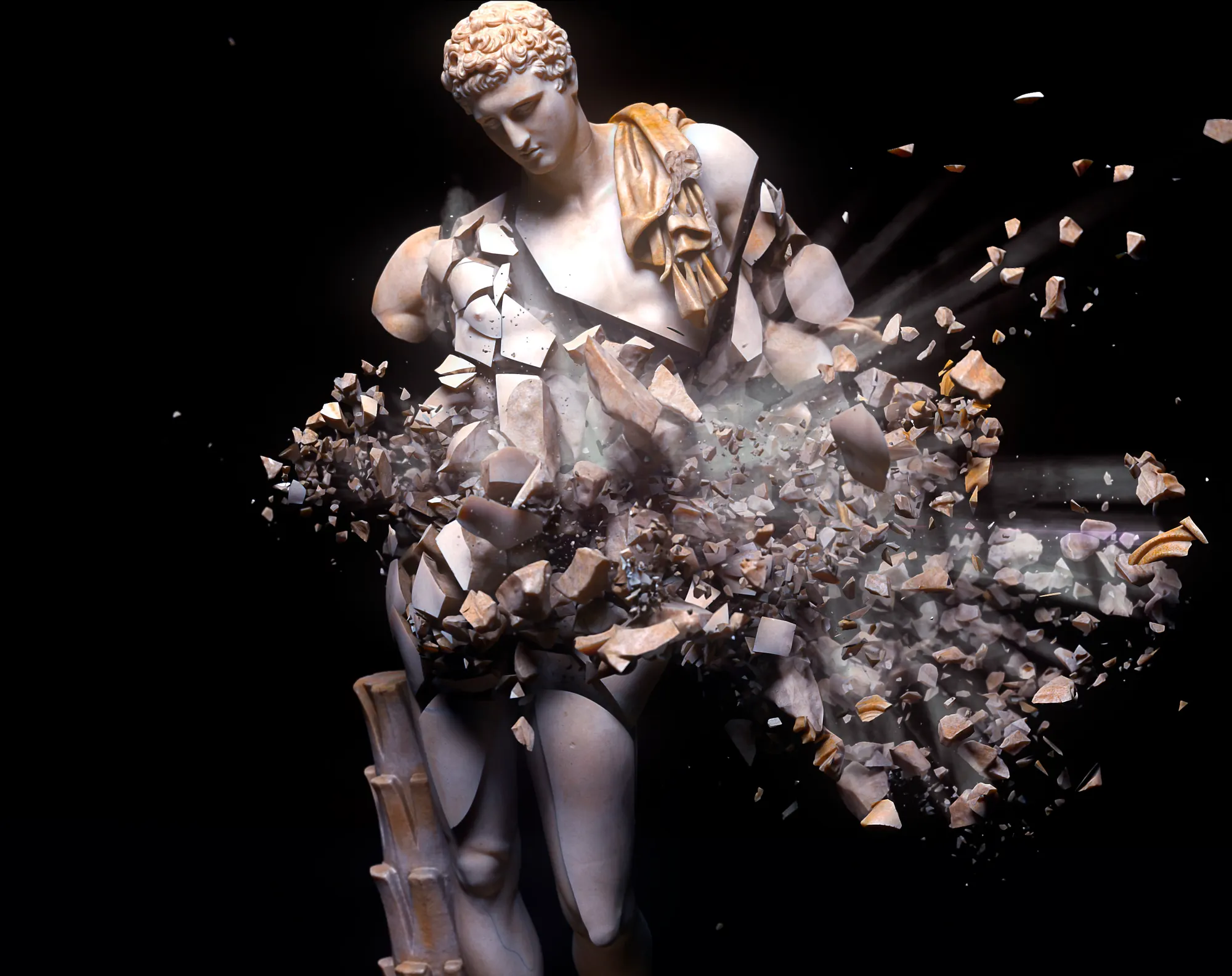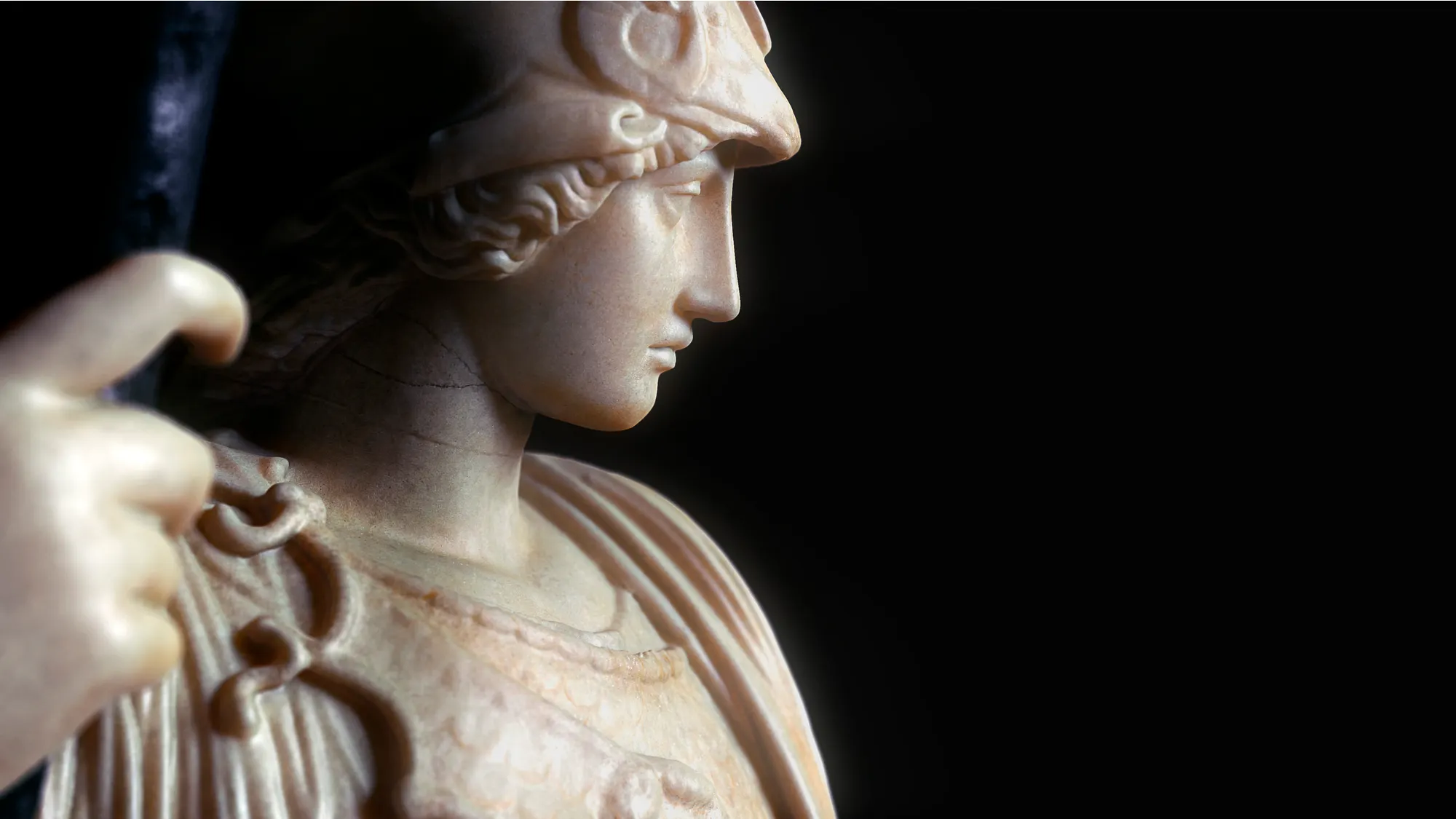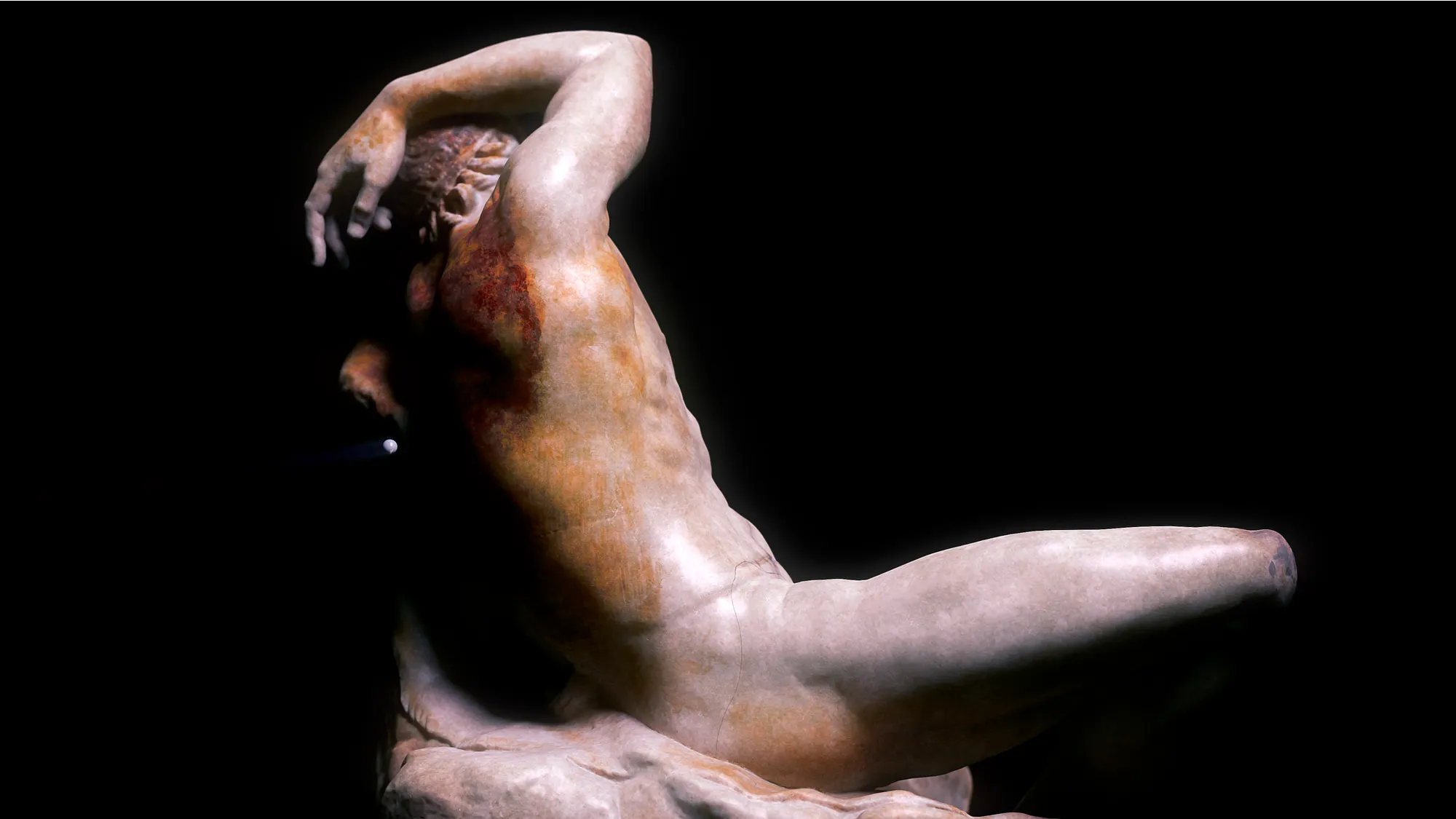The Gods Are Changing
An interview with film maker Lucio Arese on his prize winning short film Les Dieux Changeants based on 3D scans from SMK Open
 Still image from Lucio Arese’s prizewinning short film Les Dieux Changeants featuring a 3D scan of Hermes Belvedere from SMK Open
Still image from Lucio Arese’s prizewinning short film Les Dieux Changeants featuring a 3D scan of Hermes Belvedere from SMK Open
Merete Sanderhoff, SMK: We were happily surprised when back in April, you contacted us to let us know that you had made a short film using 3D scans from SMK — we always love hearing how the collection is used outside the museum walls. How did you come across the scans in the first place?
Lucio Arese, film maker: Thank you! It happened by chance last year, one day when I was looking for 3D models on the Internet. I stumbled upon an image of the Laocoon Group which immediately fascinated me, and I discovered the SMK collection on MyMiniFactory. I became aware of the SMK Open project which I found very interesting — I already had some vague notion of museums digitizing their collections, but from that point on I got really interested in the topic.
How did you get the idea for the film and the theme Les Dieux Changeants — “the gods are changing” or “the changeable gods”? Was it an idea you had already and then you found the right material to deliver it, or did the 3D scans ignite the idea for the film?
I would say that the scans transformed the idea from technical to artistic: for a while, I’ve been interested in dynamic simulations involving the fragmentation and destruction of 3D objects, but from a merely technical/aesthetic point of view. The moment I discovered the scans I thought to employ them in my tests and that made the project grow to a point much more evolved than a normal 3D work: working on the statues created in me many suggestions which in the end contributed to the realization of Les Dieux Changeants.
Watch Lucio’s short film Les Dieux Changeants
It’s funny because we always say that users can do everything they want with the digital copies of cultural heritage without breaking the originals — and you really take us up on it! What’s the deal with breaking the antique sculptural heritage in this film?
Depicting the destruction and collapse of some of the masterpieces of Western civilization surely could look like a bold statement, but I think it’s very obvious that this is not a filmic transposition of real events and NONE of this is supposed to happen in real life: everything in this work is represented in an allegorical form. None of what is depicted is to be interpreted literally, and the way the work is structured points this out very clearly.
I also received some feedback from people who don’t like what they see at all, but again, this is something that could happen only if the attention stops at the very surface of this work. I see the vast majority of people perceiving a positive or negative message out of it, but understanding perfectly that all this has nothing to do with reality.
The act of destroying something could acquire many different meanings, and this is what the philosophical concept of the work is about. The counterposition between negative and positive — annihilation and creativity is what I basically wanted to point out, and leave it up to everyone to make their own open interpretation.
 Still image from Lucio’s film with the Laocoon group exploding
Still image from Lucio’s film with the Laocoon group exploding
The film has a quite philosophical edge and ends with a quote by [Friedrich Nietzsche](https://en.wikipedia.org/wiki/FriedrichNietzsche) — what’s the story behind this?_
Over the last years, I’ve had a fascination for Nietzsche’s philosophy and read a good deal of his works. For sure, I somehow absorbed it. Besides the specific concepts of his thinking, what always strikes me in Nietzsche is his extremely powerful imagination. His texts are a very rich and magmatic corpus which can be seen and interpreted in many ways.
While producing the short, I didn’t have a plan for a specific philosophical significance of what I was doing: for sure, I had strong personal and emotional reasons to do it this way, and I operated between intuition and rationality with a precise technical drafting as is usual for me. Only after the work was completed did I go back to better understand what I had realized, and I felt it was necessary to make a closing statement for what’s depicted in the film. This is when Nietzsche came to my mind and after some research I found a quote from his Zarathustra which perfectly summed up what I wanted to communicate, and everything made sense to me as well. It really was the best description of what I wanted to transmit with this work, and an emblematic philosophical overlay in which everyone has to make their own sense of it.
It’s a fascinating thing for me to read many different impressions and interpretations of Les Dieux Changeants, even things I never thought about myself. It’s like everyone is giving a little piece of themselves to make their own impression of the short, and I guess that’s what makes it interesting and stimulating in a way much further than I predicted.
As for me, I prefer not to delve too deeply into a philosophical analysis of my own, which is of no importance in the end. I prefer to leave the enigmatic appeal which brings this short film to life.
Why did you give your film a French title? Is it a quote, like the one from Zarathustra?
No it’s not a quote, it’s a title of my own. It’s related to the musical choice of Chopin, which plays an essential role in the film. His Nocturne op. 27 no. 2, one of his most beautiful compositions, has an intimate sweet melancholy which, opposed to the kinetic brutality of the statues disgregating, creates a contrast that gives force and delicacy, primitive energy and decadence at the same time. Music and title contributes to give a French taste to the work which makes everything more gentle, with an element of counterintuitivity that I like.
 Still image of Athena Pallas Giustiniani before the virtual transformation
Still image of Athena Pallas Giustiniani before the virtual transformation
The soundtrack is really beautiful and soulful, so it’s surprising to learn that the music was generated by a computer based on Chopin’s original score from 1837. Why did you make that choice?
I did that mainly to avoid any possible copyright issue that you may run into by using one of the known executions of Chopin in commerce. I’ve always been in love with the famous Arthur Rubinstein’s rendition of Chopin’s Nocturnes which is invaluably more human, heartfelt and beautiful than what I did with MIDI files and software: I really wanted to use this execution for the short film, but it would have created many potential complications with authorization requests and permissions to use from the music label(s). So I decided to create my own digital rendition of the Nocturne op. 27 no. 2, Chopin’s original music score obviously being free of any copyright whatsoever, in order to be completely free to use it in any way I might need. I’ve never been fond of MIDI digital piano music but I had to change my opinion. Today, with a good piano library and the right software it’s possible to get more than acceptable results. To me, it’s been a great way forward offered by today’s technologies. They provide new possibilities for creativity in making use of what’s freely available for everyone in the public domain.
The scans are completely neutral, but you’ve added a very beautiful patina or ‘skin’ to the figures — tell us a bit more about the aesthetic choices you’ve made?
The technical process is called texturing and it’s essential in the production of computer generated 3D imagery. It’s very much like painting an object in real life to create its look and details, different kind of materials etc. I did all the texturing with Substance Painter, a fantastic 3D texturing software of very common use today.
About aesthetic choices, I obviously wanted the 3D statues to be recognizable and comparable in their appearance to their real life counterparts but I realized it was pointless and too time consuming to create perfect photorealistic reconstructions. I collected large amount of pictures from every statue around the Internet and I tried to follow the tiny details of every one of them (signs of time, dirt, scratches, cracks in the marble here and there) but not in a perfectly precise way. I also took some artistic license in the colors and overall appearance. In the end the virtual marbles of Les Dieux Changeants are not perfect reproductions of the real statues, but quite similar 3D replicas.
 Still image showing the beautiful patinated texturing of the Barberini Faun
Still image showing the beautiful patinated texturing of the Barberini Faun
Did you run into any technical difficulties using the scans?
Not at all, they’re all good multi-purpose 3D models which are perfectly usable in every 3D related software/environment.
What is the deeper purpose or mindset of working with digital cultural heritage for you?
The one and only purpose, for sure, is to transmit interest and love for those ancient masterpieces, and more generally for our cultural heritage and history.
Any advice how we could improve the reuse of our collection?
Looks to me that you are actually doing a great work with what you’re doing, and I wouldn’t know what to suggest or how to improve it. What I would like to do instead is to spread the word, and in that sense Les Dieux Changeants can be seen as a small artistic contribution to the diffusion of the SMK Open program to a public that potentially might know anything about it. I already received some feedback from people who discovered the program and other ongoing digitization initiatives through this short film. This is surely one of the things that makes me the most happy for the public outcome of this work.
 A selection of festivals where Lucio’s short is nominated for — and has won — prizes
A selection of festivals where Lucio’s short is nominated for — and has won — prizes
Les Dieux Changeants is receiving a lot of attention and praise.
As an experimental short film Les Dieux Changeants is receiving a lot of interest from film festivals, a whole lot more than I was expecting. The short is at the very beginning of its festival run and already got a Gold Award from Independent Shorts Awards in Los Angeles, and won as Best Low Budget Film and Best Art Design at Anatolia International Film Festival in Istanbul. At this moment, it’s a finalist in two additional festivals in Vancouver and Munich, and it got a bunch of official selections all over the world. I arranged a first pool of festival submissions that will deliver results until September 2021, so the outcome is evolving week by week.
I went to many festivals with my work in the past (like Ars Electronica or SIGGRAPH) but always related to the fields of digital arts. This is my first time in the film festival circuit, so this is exciting for me! It’s kind of all new and I’m having lots of fun with it.
I realized that this work has three main aspects converging which makes it a piece worth attention:
the strong visual impact and well crafted CGI,
the open philosophical meaning, and
the background connection with the digitization of cultural heritage to be reused to create new art — a very topical theme.
All this constitutes quite an unusual concept for a short film and gives it some kind of an ‘outsider’ appeal which makes it interesting for the experimental divisions of many festivals. That’s my own idea of what’s happening.
Do you plan to make more films based on content found in open museum collections? There are more than 1,000 open cultural heritage collections available, and the field is growing.
I would absolutely love to do further work in this field, but I will not destroy anything anymore, I promise! I guess once is more than enough.
Jokes aside, I would like to create something completely different from what I did with this work. I don’t have precise plans or ideas at the moment, but it’s definitely something I will seriously think about and consider in the future, and I would be open to any proposals as well.
Lucio Arese is an Italian artist and film maker, based in Cúneo. You can check out more of his work, both artistic and commercial, at his website and follow the reception of Les Dieux Changeants at its official page on Instagram.
 Film maker Lucio Arese
Film maker Lucio Arese
A special thanks to Jonathan Beck from Scan The World for scanning the sculptures in SMK’s collection.